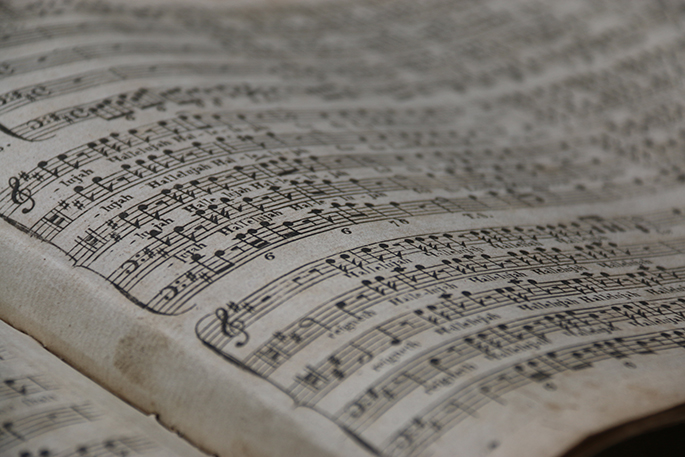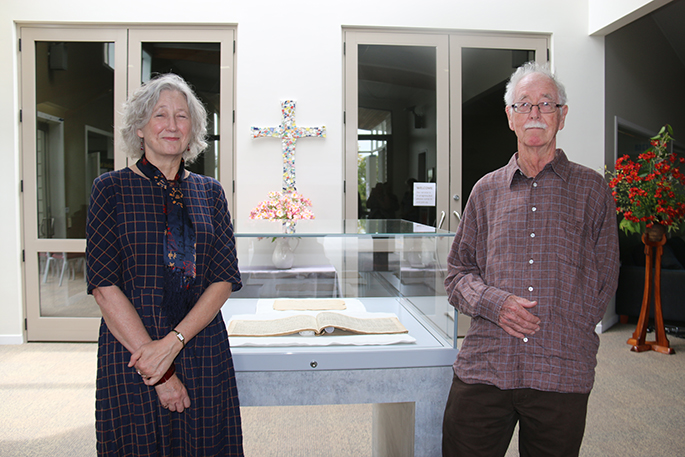I went to hear a light ‘parlour' version of Handel's Messiah performed in a church in Katikati. There was something very unique about this edition, but first I chatted with Marjorie Partington, a member of St Paul's Prebyterian Church who reminisced about her childhood.
'I was brought up in the north of England,” says Marjorie, 'where the Messiah was big at Christmas.”
It's always enjoyable hearing someone else's connection to a piece of music. George Frederick Handel, born in Germany, moved to London, was a celebrated opera oratorio composer of his day and composed the Messiah in 1742. She continues.
'Even now I get a shiver when I hear some of the choruses because it's so evocative of growing up. This performance today is very special because it was written for a parlour, not a big church. Handel approved of this because it made money. There were benefit concerts, and the money he would use to help the poor and the oppressed.”
It was decided in 1784, on the 25th anniversary of Handel's death to stage a series of his concerts. Some of his best-loved works were republished in new editions.
The Messiah was one of these, despite it being performed continuously since Handel had composed it. Amateur music-making in the home had risen in popularity so an arrangement for ‘parlour performance' of this work was made and published in 1784.
Somehow a copy of this edition made its way to New Zealand. One of only four known copies world-wide, this manuscript has now surfaced in Katikati.
How did this happen?
Firstly, one of Katikati's early pioneering families, the Killens had a historic silk gown which one of the descendants Dr Barbara Smith gifted to the Western Bay Museum. The Killen Gown was mounted and is on display there.
Barbara's cousin, Colin Smith is a grandson of Mary Elizabeth Killen and came to the museum when Te Papa National Services Te Paerangi Conservator of Textile and Costume, Sam Gatley was there in August 2016 to mount the gown for safe display.
Colin watched the process and remembered his grandmother wearing the garment.

He decided to gift three violins to the museum.
'The violins were headed to Te Papa,” says Western Bay Museum manager Paula Gaelic. 'They could see we were looking after their family treasures properly, and doing it by Te Papa standards.”
Colin's wife Stephanie Smith recalls what else had come into their possession.
'Colin bought a violin from an auction and this manuscript came with it,” says Stephanie. 'We didn't realise it was there, we just thought it was an old piece of music, a version of the Messiah for parlour performance we thought was quite funny – to have a performance in your front room. I'm slightly embarrassed to say it was sculling around in our piano stool up in Auckland for several years just in a paper bag. It was in poor condition when we acquired it. Through a long series of circumstances, Rachel Griffiths-Hughes at the University heard about it and decided to do some research on this particular version of the Messiah.”
'It was found to be an 18th Century manuscript on rag-based paper rather than wood-pulp based paper,” says Stephanie. 'They used linen rags with the result that it's not acidic and lasts, and they also used high quality inks in the 18th Century. Even though this had a hard life and the title page has detached, the text blocks are still in really good condition and can be read and played and copied. If that had been made 100 years later with the acidic papers that they used in the late 19th Century it would probably be crumbling to bits.”
'I didn't notice until ten years this manuscript at the bottom of the pile until ten years after I bought it,” says Colin. That was about 20 years ago.
'I tried to find out who originally owned it but haven't been able to ascertain that. Rachel Griffiths-Hughes from Waikato University has spent quite a bit of time on it for which we are all very grateful.”
Colin understands there are three other known copies of the manuscript, one in New York, one in the British Library system and one in the Handel Collection.
'And then there's this one. I suspect it came with the violin and the ship's piano when it came up for auction. It probably came in the 1840s or 50s.”
Colin asked Paula if she'd like to have a concert for the museum.
'I can't believe we've got the manuscript here in our small town of Katikati,” says Paula. 'It's never been on display in the Southern Hemisphere before and very few people in the world would have seen it.”
Colin was able to hear it for the first time with performers from Waikato University.
'This amazing piece of music which was a big hit in London was transported we think along with a piano, a violin and a cello to New Zealand on that treacherous five month voyage for people setting up a new life here,” says Rachel. 'For people who know the work well it's different and refreshing. For people who don't know the work well, they'll hear this piece of music done for parlour performance as it could have been done in NZ as early as 1860.”
'To have the performance of the Messiah here in a church would be very familiar to Handel and I think he'd approve,” says Marjorie.

Stephanie and Colin Smith.



0 comments
Leave a Comment
You must be logged in to make a comment.